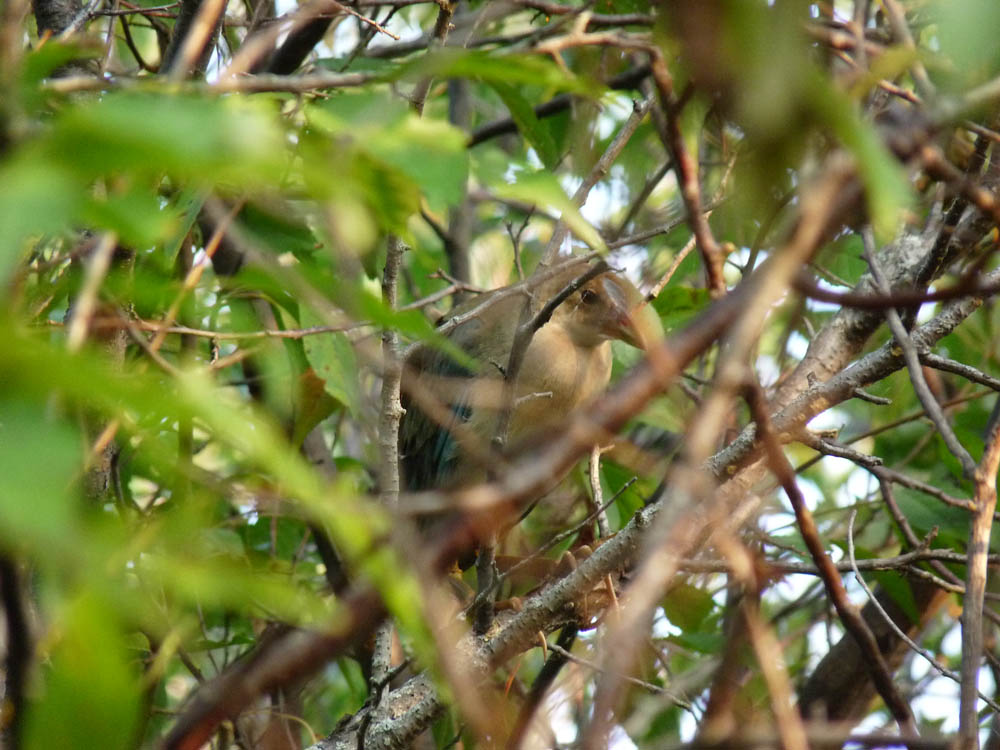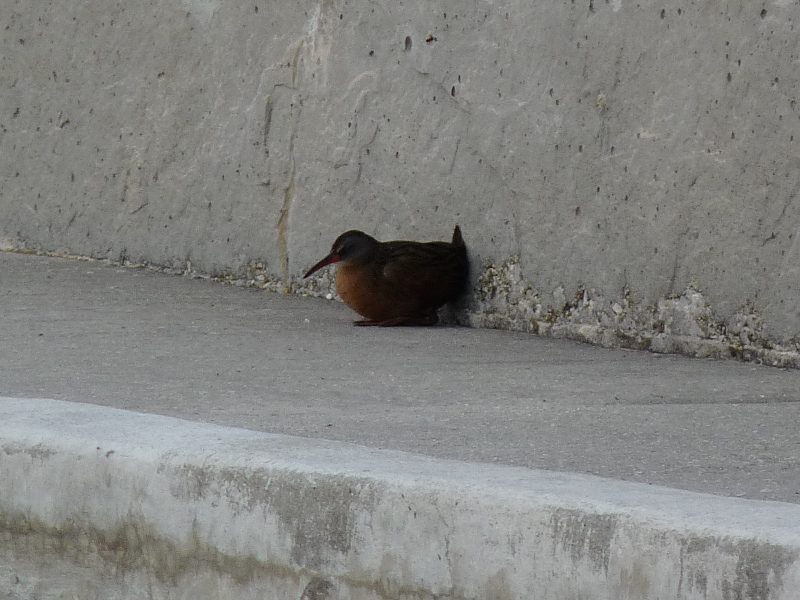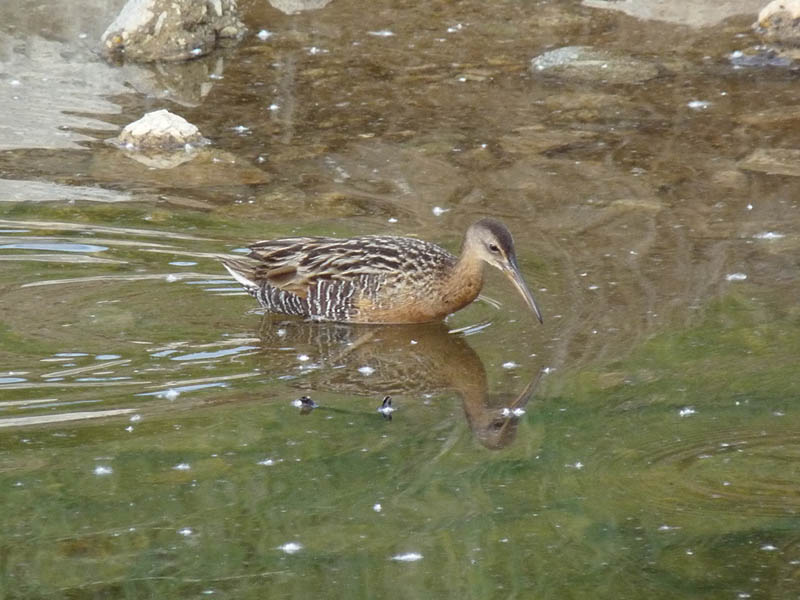
Purple Gallinule (click to see the larger version)
Fortuitous – Happening by a lucky chance; fortunate.
On the morning of September 23 I was walking on the footpath at the east end of Montrose Point as I usually do when I visit. This is one of my favorite places at Montrose as it provides a sweeping view of Chicago and Lake Michigan. Around 7:30 an unfamiliar, medium-sized bird flew over me, heading west, and moving fast. Right behind it and in hot pursuit was one of our local Peregrine Falcons. I thought the mystery bird may have been a Least Bittern or Green Heron. Whatever it was it just missed becoming breakfast for the Peregrine and crash-landed in some shrubs not far from where I was walking. I hurried over to where I thought the bird came down and after poking around found a juvenile Purple Gallinule about 10 feet up buried in dense vegetation. It appeared stunned from the near-death experience and didn’t move while I watched and photographed it. The bird stayed in the same spot for the rest of the day and was viewed and photographed by many. It was not seen after September 23. This is the second record of Purple Gallinule for Montrose. I’ve included a link to my eBird checklist for the day below.
Purple Gallinules breed in the southeastern United States, parts of Mexico and Central America, the Caribbean, and throughout much of South America. Birds in the southeastern United States are migratory and retreat to the American tropics and Florida for the winter. Assuming the bird was born in the US, the Montrose Purple Gallinule should have gone south instead of north, an example of mirror image misorientation. Purple Gallinule vagrancy is well-established; individuals occur regularly far out of range in North America.
Previous Purple Gallinule Records For Montrose Point
May 7 – 10, 1999 (adult). Meadowlark, A Journal of Illinois Birds, Volume 8, Number 4.
eBird Checklist
September 23, 2020




